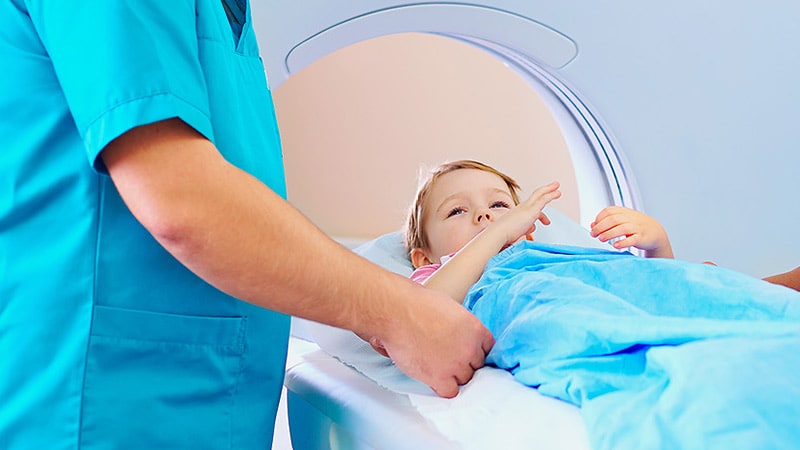Core Concepts
CT scans in children increase the risk of blood cancer due to low-dose radiation exposure.
Abstract
The study confirms an increased risk of blood cancer from CT scans in children due to low-dose radiation exposure. Key points include:
- One to two children out of 10,000 examined with an average low dose of 8 mGy may develop hematological malignancy.
- Study based on 1.3 million CT scans in nearly 900,000 people under 22 years old.
- Low-dose radiation exposure from CT scans in childhood and adolescence poses a risk of hematological malignancies.
- Risk of hematological malignancies increases with the number of CT exams.
- Importance of optimizing doses in this patient population highlighted.
Customize Summary
Rewrite with AI
Generate Citations
Translate Source
To Another Language
Generate MindMap
from source content
Visit Source
www.medscape.com
Study Confirms Small Blood Cancer Risk From CT Scans
Stats
For every 10,000 children examined with an average low dose of 8 mGy, one to two will likely develop a hematological malignancy related to radiation exposure over the next 12 years.
A nearly twofold excess risk of all hematological malignancies per 100 mGy in children, adolescents, and young adults was found.
Quotes
"This publication indicates that there could be a small cancer risk from CT scans in young people, but it is important for this to be viewed in the context of the substantial benefit these scans bring." - Sarah McQuaid, PhD
Key Insights Distilled From
by Megan Brooks at www.medscape.com 11-15-2023
https://www.medscape.com/viewarticle/998496
Deeper Inquiries
How can the medical community balance the benefits of CT scans with the potential risks highlighted in this study
The medical community can balance the benefits of CT scans with the potential risks highlighted in this study by implementing strategies to optimize doses and minimize unnecessary scans. Radiologists and healthcare providers should follow the ALARA (As Low As Reasonably Achievable) principle when conducting CT scans, ensuring that the benefits of the scan outweigh the potential risks. This involves using the lowest possible radiation dose that still provides accurate diagnostic information. Additionally, healthcare providers should carefully consider the necessity of each CT scan, especially in pediatric patients, and explore alternative imaging modalities when appropriate to reduce radiation exposure. Patient education is also crucial in helping individuals understand the risks and benefits of CT scans, enabling them to make informed decisions about their healthcare.
What are the implications of these findings for the future use of CT scans in pediatric patients
The implications of these findings for the future use of CT scans in pediatric patients are significant. While CT scans provide valuable diagnostic information, especially in emergency situations or complex medical cases, healthcare providers must be cautious in their use, particularly in children and young adults. The study's results suggest a small but real risk of developing hematological malignancies related to radiation exposure from CT scans. Therefore, healthcare providers should carefully weigh the necessity of each scan, considering alternative imaging modalities that do not involve ionizing radiation whenever possible. Furthermore, ongoing research and monitoring of long-term outcomes in pediatric patients who undergo CT scans are essential to better understand the risks and benefits associated with these imaging procedures.
How can advancements in technology help reduce the radiation exposure risk associated with CT scans
Advancements in technology can help reduce the radiation exposure risk associated with CT scans through various means. One approach is the development of low-dose CT protocols that utilize advanced imaging techniques to maintain diagnostic quality while minimizing radiation exposure. Iterative reconstruction algorithms, dose modulation strategies, and improved scanner technology can all contribute to lowering radiation doses during CT scans. Additionally, the use of artificial intelligence (AI) in image reconstruction and processing can help optimize scan parameters and reduce unnecessary radiation exposure. Continuous research and innovation in CT imaging technology are crucial to further enhancing the safety and efficacy of CT scans, especially in pediatric patients.
0
